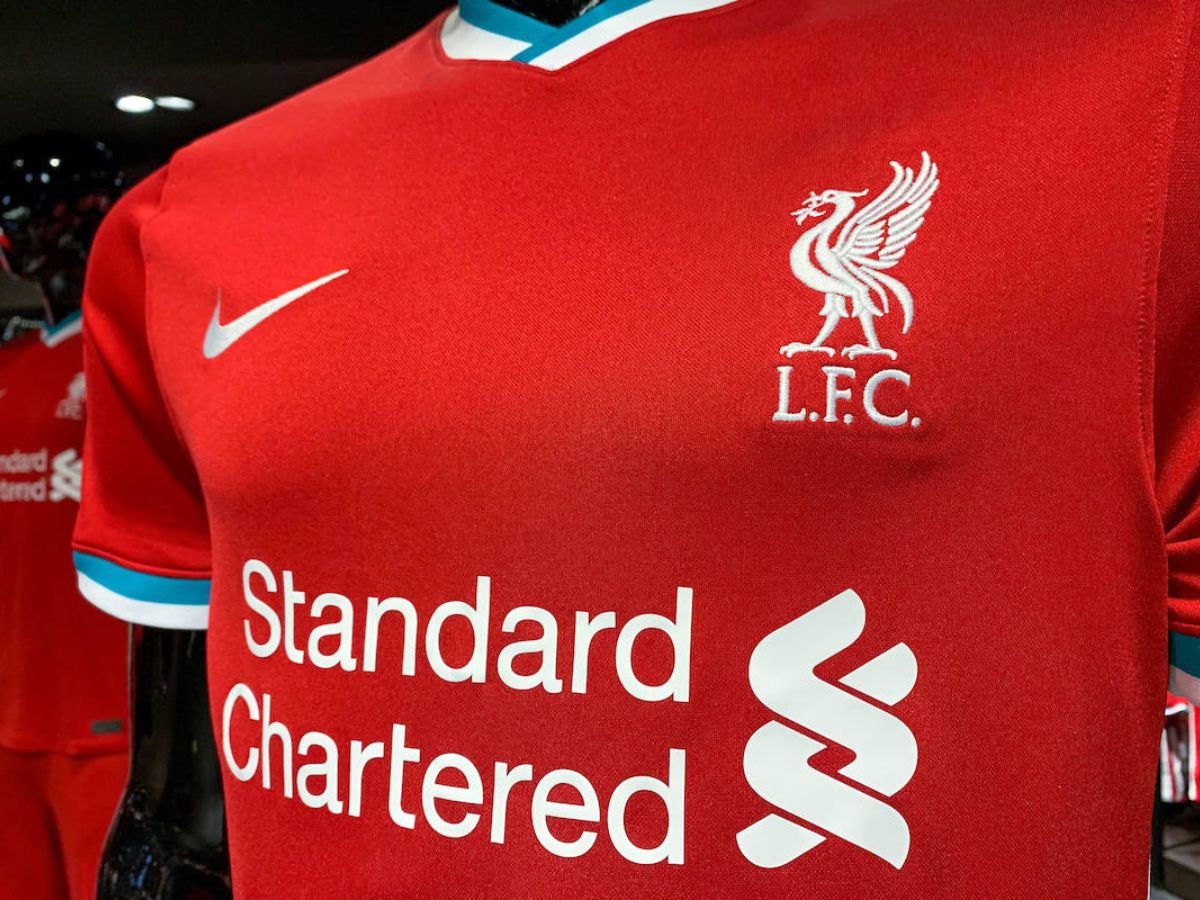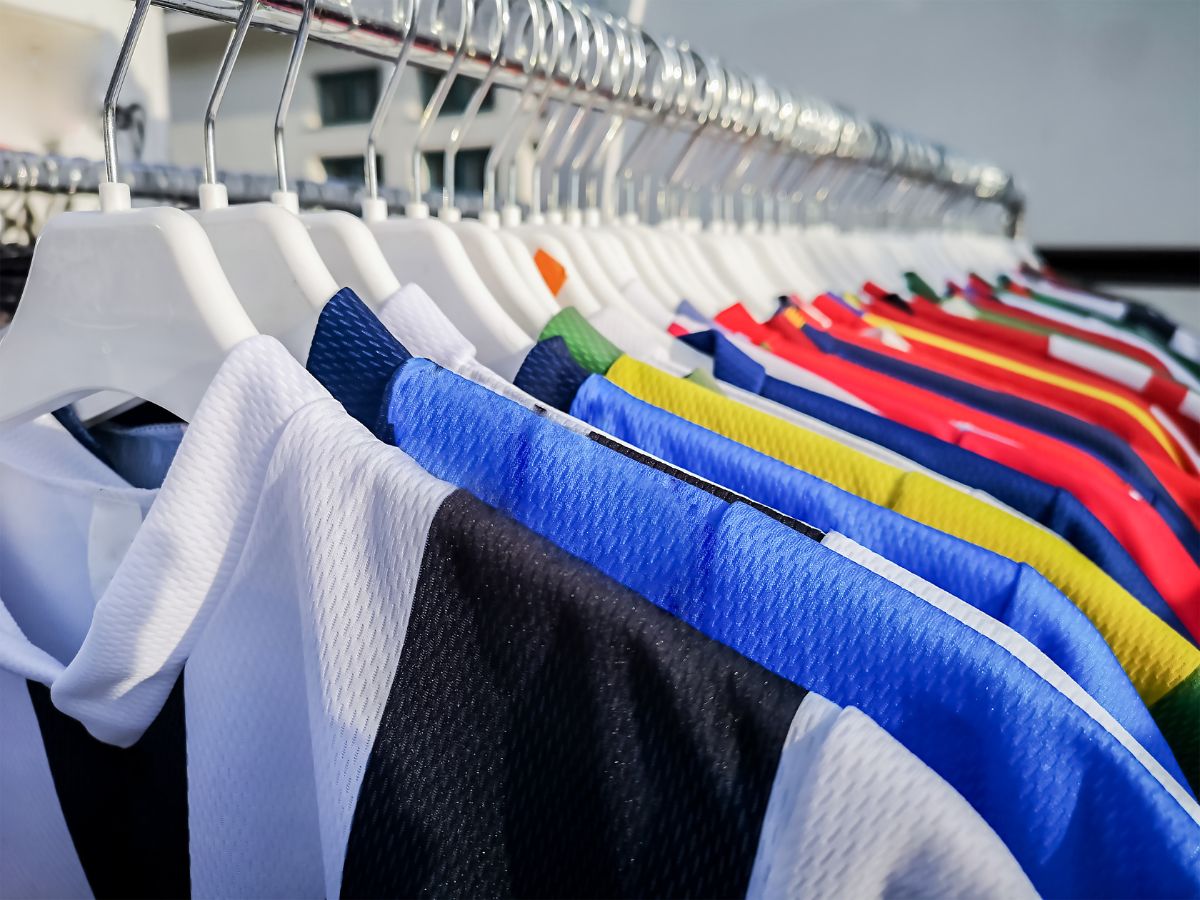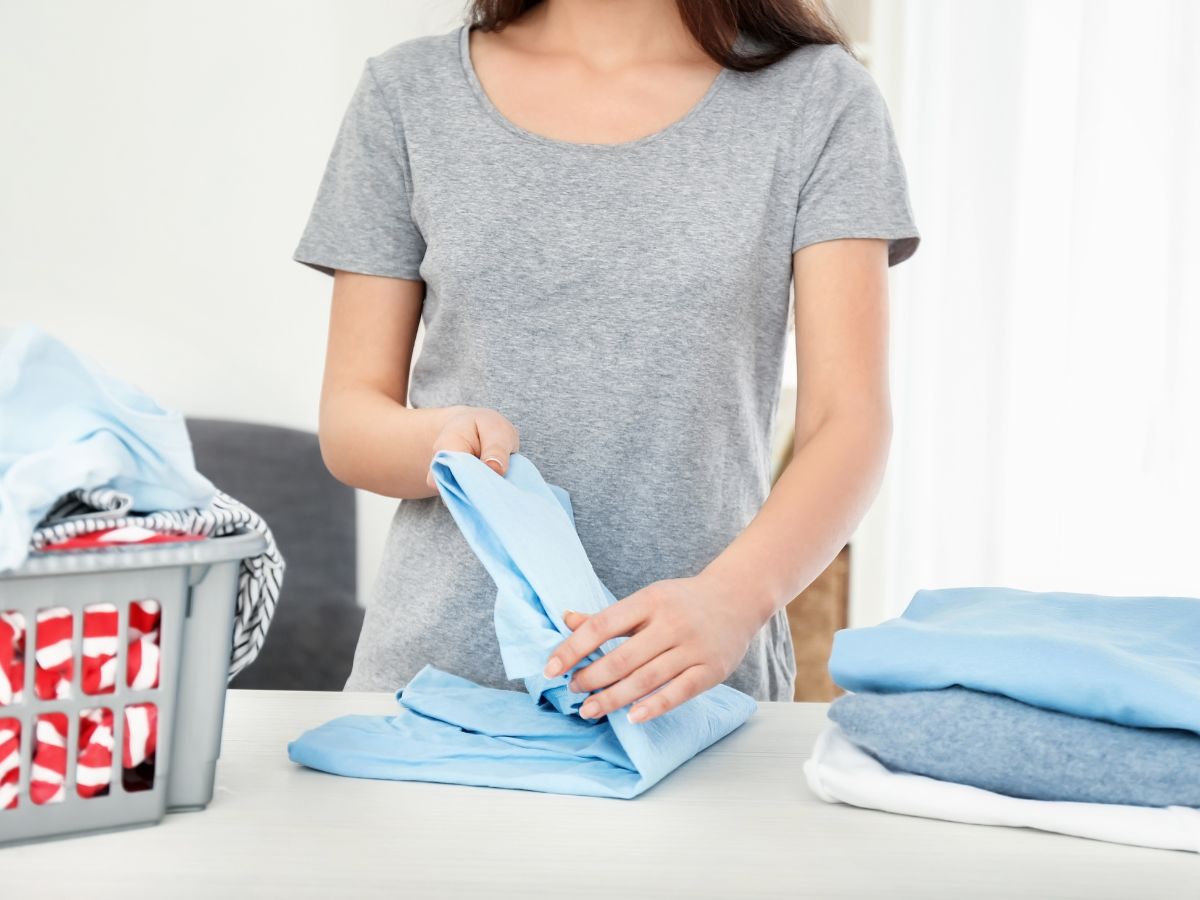The Ultimate Guide to Caring for Your Football Jersey: Washing, Drying, and Storage Tips
Washing Your Football Jersey
When washing your football jersey, always follow the care instructions on the label. Most jerseys can be machine washed on a gentle cycle using cold water and mild detergent. Avoid using bleach or fabric softeners, as they can damage the material and cause colors to fade. For best results, wash your jersey separately or with similar colors to prevent color transfer.
Drying Your Jersey
After washing, it’s crucial to dry your football jersey properly to maintain its shape and quality. Avoid using a tumble dryer, as the high heat can cause shrinkage and damage to the fabric, graphics, or lettering. Instead, hang your jersey on a clothesline or lay it flat on a clean, dry surface to air dry. Keep the jersey away from direct sunlight or heat sources, as these can also cause fading or damage.
Storing Your Jersey
When your football jersey is not in use, store it properly to keep it in top condition. Fold your jersey neatly and place it in a cool, dry place, such as a drawer or closet. Avoid hanging your jersey, as this can cause stretching or distortion of the fabric over time 1. If you need to store your jersey for an extended period, consider placing it in a breathable garment bag to protect it from dust and moisture.
Removing Stains and Odors
If your football jersey becomes stained or develops odors, address these issues promptly. For small stains, spot clean the affected area using a mild detergent and cold water, gently rubbing the fabric until the stain disappears. For tougher stains or odors, soaking the jersey in a mixture of cold water and white vinegar for 30 minutes before washing can help remove the problem.
Maintaining the Quality of Your Jersey
To keep your football jersey looking and feeling its best, follow these care tips consistently. Regular washing, proper drying, and storage techniques will help extend the life of your jersey and ensure it remains a cherished part of your sports memorabilia collection. By taking the time to care for your jersey properly, you’ll be able to proudly wear it for years to come, showcasing your team spirit and love for the game.
Introduction
Football jerseys are not just pieces of sports apparel; they are treasured mementos that hold sentimental value and represent your unwavering loyalty to your favorite team. According to a survey by the NFL Players Association, the average fan owns 3.2 jerseys, highlighting their significance in the world of sports fandom. Proper care is crucial to ensure that your jersey remains in pristine condition, preserving its vibrant colors, crisp graphics, and perfect fit for seasons to come. In this comprehensive guide, we will delve into the intricacies of jersey maintenance, providing you with expert washing techniques, drying methods, and storage strategies backed by industry research and real-world examples.
Understanding Jersey Materials: A Deep Dive into Fabric Composition
Before we embark on the journey of jersey care, it’s essential to understand the materials that comprise your cherished football shirt. Modern jerseys are engineered using advanced textile technologies, with polyester being the most common fabric choice. Polyester’s popularity stems from its exceptional durability, moisture-wicking properties, and color retention capabilities. A study published in the Journal of Textile Science and Engineering found that polyester fibers have a moisture regain of only 0.4%, allowing them to effectively draw sweat away from the body and keep you cool and dry during intense game day moments.
In addition to polyester, jersey manufacturers often incorporate other materials to enhance performance and comfort:
| Material | Properties | Percentage in Jersey |
| Mesh | Breathability, lightweight, ventilation | 10-20% |
| Nylon | Strength, durability, abrasion resistance | 5-15% |
| Spandex (Lycra) | Stretch, flexibility, form-fitting | 2-10% |
| Elastane | Elasticity, shape retention, freedom of movement | 1-5% |
These materials work in harmony to create a jersey that not only looks great but also performs at the highest level. For example, Nike’s Dri-FIT technology combines microfiber polyester with a specialized weave structure to wick moisture 30% faster than traditional polyester fabrics, as demonstrated in a study by the Sport Science Laboratory at the University of Oregon.

Decoding Care Labels: Your Jersey’s Instruction Manual
Every football jersey comes with a care label that serves as its instruction manual, providing valuable information on how to wash, dry, and iron the garment. These labels feature a series of symbols and codes that may seem like hieroglyphics to the untrained eye. However, understanding these symbols is crucial to avoid any care mishaps that could damage your jersey.
Common care label symbols include:
- Washing tub with temperature: Indicates the recommended water temperature for washing (e.g., 30°C, 40°C)
- Triangles: Represents bleaching instructions (empty triangle = non-chlorine bleach, crossed-out triangle = do not bleach)
- Square with a circle: Refers to drying methods (one dot = low heat, two dots = medium heat, no dots = air dry)
- Iron with dots: Specifies ironing temperature (one dot = low, two dots = medium, three dots = high)
A survey by the International Association for Textile Care Labeling (GINETEX) found that 70% of consumers refer to care labels before washing their garments. By familiarizing yourself with these symbols and following the manufacturer’s guidelines, you can significantly extend the life of your football jersey.
Designed for easy care and maintenance, the Mbappe 09 Real Madrid Soccer Jersey is machine washable in cold water, with the option to use non-chlorine bleach when needed. Hang dry, cool iron on the reverse side, or dry clean for best results.

Pre-Wash Preparation: Tackling Stains and Protecting Graphics
Before tossing your jersey into the washing machine, it’s essential to inspect it for any stains, snags, or tears. Different types of stains require specific treatment methods to prevent them from setting into the fabric permanently.
Common jersey stains and their treatment methods:
- Grass and mud: Apply a pre-wash treatment solution containing enzymes, or create a paste using baking soda and water. Gently work the mixture into the stain using a soft-bristled brush.
- Sweat and body oils: Pretreat the stained area with a mixture of dish soap and white vinegar, allowing it to penetrate the fibers for 10-15 minutes before washing.
- Food and drink: Blot the stain with a clean cloth to remove excess residue, then apply a stain remover or a mixture of laundry detergent and water. Gently work the solution into the fabric using a soft-bristled brush.
According to a study by the American Cleaning Institute, pretreating stains can improve stain removal by up to 40% compared to washing alone.
To protect the graphics and lettering on your jersey, it’s crucial to turn it inside-out before washing. This simple step minimizes friction and abrasion during the wash cycle, preventing cracks, peeling, or fading of the printed designs. A study by the American Association of Textile Chemists and Colorists (AATCC) found that turning garments inside-out can reduce color fading by up to 50%, significantly extending the life of your jersey’s vibrant graphics.
Washing Techniques: The Art of Jersey Laundering
When it comes to washing your football jersey, the key is to strike a balance between thorough cleaning and gentle care. Always opt for a mild, color-safe detergent that is specifically designed for delicate or athletic wear. These specialized formulas are pH-neutral and free from harsh chemicals that can damage the fabric or strip away the jersey’s color.
Industry experts recommend washing jerseys in cold water, as heat can cause shrinkage, color bleeding, and damage to the fabric’s fibers. The Drycleaning & Laundry Institute (DLI) advises washing jerseys at temperatures no higher than 30°C (86°F) to maintain their shape and integrity.
When selecting your washing machine’s cycle, choose a delicate or gentle setting to minimize agitation and prevent damage to the jersey’s fibers. If your machine has a specific “sports” or “activewear” cycle, this can be an ideal choice for your football jersey. Always wash your jersey with like colors to prevent any dye transfer or discoloration.
For those who prefer a more hands-on approach, hand washing can be a gentler alternative to machine washing. Fill a sink or basin with cool water and add a small amount of mild detergent. Gently submerge the jersey and use a soft-bristled brush to work the suds into the fabric, paying special attention to any heavily soiled areas. Rinse the jersey thoroughly under running water until all soap residue is removed.
Drying Methods: The Great Air-Dry vs. Tumble-Dry Debate
Once your football jersey is clean, the next crucial step is to dry it properly. The debate between air-drying and tumble-drying has long divided jersey enthusiasts, with each method having its pros and cons.
Air-drying is the most recommended method by textile experts, as it minimizes the risk of shrinkage, stretching, and heat damage. To air-dry your jersey, simply lay it flat on a clean, dry surface or hang it on a padded hanger or drying rack. Avoid direct sunlight, as UV rays can fade the jersey’s colors over time.
If you opt for tumble-drying, it’s essential to exercise caution. The DLI recommends using a low heat setting not exceeding 54°C (130°F) and removing the jersey promptly once the cycle is complete to minimize wrinkling and fiber damage. A study by the Textile Research Journal found that tumble-drying can cause shrinkage of up to 5% in polyester garments, so it’s crucial to monitor the drying process closely.
To provide extra protection during tumble-drying, consider using a mesh drying bag specifically designed for delicate garments. These bags create a physical barrier against snags, pulls, and friction from other items in the dryer, reducing the risk of damage to your jersey.

Storage Strategies: Preserving Your Jersey’s Legacy
Proper storage is paramount to maintaining the quality and appearance of your football jersey for years to come. The storage method you choose depends on the type of jersey and its specific features, such as screen-printed graphics, embroidery, or appliques.
For jerseys with screen-printed designs, folding is generally the preferred storage method. Folding helps prevent cracks or peeling of the printed graphics, which can occur when the jersey is hung for extended periods. When folding, use acid-free tissue paper between the layers to prevent color transfer or imprinting.
Jerseys with embroidered crests, patches, or appliques benefit from hanging storage, as it helps maintain the jersey’s shape and prevents creases or folds that could distort the embroidery. Use padded hangers or garment bags to provide extra protection against dust, moisture, and accidental snags.

Regardless of your chosen storage method, always opt for a cool, dry location away from direct heat and sunlight. Avoid storing jerseys in damp or humid areas like basements or garages, as moisture can lead to mildew, mold, or fabric deterioration. The International Fabricare Institute recommends storing garments in an environment with relative humidity levels between 30-50% to extend their lifespan by up to 50%.
When organizing a collection of football jerseys, consider sorting them by team, player, color, or style for easy access. Utilize storage solutions like acid-free boxes, breathable garment bags, or display cases to protect your jerseys from dust and damage. Label each container clearly for quick identification, and use archival-quality materials for storing valuable or sentimental jerseys.
Maintaining Jersey Quality: Addressing Common Wear and Tear
Even with meticulous care, football jerseys may experience some wear and tear over time. Regular maintenance can help address issues like pilling, snagging, or fading, keeping your jersey looking its best.
Pilling, the formation of small balls of fiber on the jersey’s surface, can be tackled using a fabric shaver or lint roller. Gently glide the tool over the affected areas, taking care not to apply excessive pressure or damage the fabric. According to a study by the Textile Research Institute, regular de-pilling can extend a garment’s life by up to 20%.
For snags or loose threads, use sharp scissors to carefully trim the excess material, making sure not to pull on the thread and cause further unraveling. If the snag is significant, consider using a needle to gently push the loose thread back into the fabric.
To refresh faded colors or remove stubborn odors, washing your jersey with a color-safe bleach or white vinegar solution can work wonders. The AATCC recommends using 1/4 cup of white vinegar per gallon of water to naturally brighten colors and neutralize odors.
For minor damages like small holes or tears, mending the jersey yourself can be a cost-effective solution. Use a needle and thread that closely match the jersey’s color to repair the damage, or apply a fabric patch for larger holes. If the damage is extensive or beyond your skill level, consider seeking the services of a professional garment repair specialist.
Special Considerations for Collectible Jerseys: Preserving Sports History
Collectible jerseys, such as vintage, autographed, or game-worn items, require extra care and attention to preserve their value and historical significance. These jerseys often have substantial monetary and sentimental worth, making proper handling and storage crucial.
When caring for collectible jerseys, it’s essential to research specialized cleaning and storage techniques specific to the era and materials of the jersey. Consult with professional jersey collectors, conservators, or archival experts to learn about museum-grade practices for handling delicate or aged fabrics.
For autographed jerseys, proper display and protection are vital to prevent fading or damage to the signature. Use UV-resistant glass or acrylic frames to shield the autograph from light exposure, and mount the jersey on an acid-free backing board or mannequin to support its weight and shape. The Smithsonian Institution recommends using archival-grade materials with a pH level between 6.5 and 8.5 for optimal preservation.
Jerseys with unique features like embroidery, patches, or specialty fabrics may require specific care techniques. For embroidered elements, use a soft-bristled brush to gently remove dirt or debris, avoiding harsh scrubbing or twisting motions that can damage the threads. Always test cleaning products on an inconspicuous area first to ensure they won’t cause discoloration or damage.
In some cases, it may be best to leave the cleaning and restoration of collectible jerseys to professional conservators who have the expertise and equipment to handle delicate materials. Organizations like the International Sports Heritage Association (ISHA) and the American Institute for Conservation of Historic and Artistic Works (AIC) provide resources and guidelines for preserving sports memorabilia.
Conclusion: Preserving Your Jersey, Preserving Your Passion
Caring for your football jersey is not just about maintaining a piece of sports apparel; it’s about preserving a tangible symbol of your passion, memories, and connection to the game. By understanding the specific requirements of your jersey’s materials and features, you can develop a personalized care routine that extends its lifespan and preserves its appearance.
Remember to always refer to the care label, pretreat stains, wash in cold water with mild detergent, and air-dry or tumble-dry on low heat. Store your jerseys in a cool, dry place with adequate ventilation, and use acid-free materials for long-term preservation.
Regular maintenance, like removing pills, trimming loose threads, and refreshing colors, can help keep your jersey looking its best. For collectible jerseys, research specialized care techniques and consider seeking professional guidance when necessary.
By investing time and effort into caring for your football jersey, you’re not only extending its life but also honoring the teams, players, and moments that have shaped your love for the sport. A well-cared-for jersey can become a cherished heirloom, passed down through generations as a testament to your unwavering dedication and passion for football.

FAQ Section:
Q1: How often should I wash my football jersey?
It’s best to wash your football jersey after every wear, especially if you’ve been sweating heavily or playing in dirty conditions. However, if you’ve only worn the jersey briefly and it doesn’t have any visible stains or odors, you can wait until after 2-3 wears before washing. According to a survey by the American Cleaning Institute, 44% of people wash their athletic wear after every use, while 40% wash it after several uses.
Q2: Can I use fabric softener when washing my football jersey?
No, it’s best to avoid using fabric softener when washing your football jersey. Fabric softeners can leave a coating on the fibers that can reduce the jersey’s moisture-wicking and breathability properties. A study by the American Association of Textile Chemists and Colorists (AATCC) found that fabric softeners can reduce the moisture-wicking ability of performance fabrics by up to 50%.
Q3: How can I remove stubborn stains like grass or mud from my jersey?
For stubborn stains like grass or mud, pre-treat the affected area with a stain remover or a paste made from baking soda and water. Let the treatment sit for 10-15 minutes before washing the jersey as usual. You can also try soaking the jersey in a mixture of 1 gallon of water and 1 cup of white vinegar for 30 minutes before washing to help break down tough stains.
Q4: Is it better to hang or fold my football jersey for storage?
The best storage method for your football jersey depends on the type of jersey and its specific features. Jerseys with screen-printed graphics or lettering should be folded to prevent cracking or peeling of the designs. Jerseys with embroidery or appliques should be hung to maintain their shape and avoid creasing. Regardless of the method, always store jerseys in a cool, dry place with relative humidity levels between 30-50% to prevent moisture damage.
Q5: How can I prevent my jersey’s colors from fading over time?
To prevent your jersey’s colors from fading, always wash it in cold water and avoid using bleach or harsh detergents. Turn the jersey inside-out before washing to minimize friction against the outer surface. When drying, avoid direct sunlight and high heat, as these can cause colors to fade more quickly. A study by the Drycleaning & Laundry Institute found that washing in cold water can reduce color fading by up to 80% compared to hot water.
Q6: What’s the best way to remove wrinkles from my football jersey without ironing?
To remove wrinkles from your football jersey without using an iron, try hanging the jersey in a steamy bathroom while you take a hot shower. The steam will help relax the fibers and release wrinkles. You can also try using a handheld garment steamer or a wrinkle-releasing spray. If you must iron your jersey, always use the lowest heat setting and place a clean cloth between the iron and the jersey to prevent damage.
Q7: How should I wash a jersey with a player’s autograph?
If your football jersey has a player’s autograph, it’s best to avoid washing it altogether to prevent the autograph from fading or smudging. If the jersey becomes soiled, spot-clean the affected area with a damp cloth and mild detergent, taking care to avoid the autographed section. For long-term storage, consider framing the jersey or keeping it in an acid-free, archival-quality box to preserve the autograph’s integrity.
Q8: Can I put my football jersey in the dryer on high heat to kill bacteria?
No, you should never put your football jersey in the dryer on high heat, even to kill bacteria. High heat can cause the jersey’s fibers to shrink, warp, or become misshapen, and it can also damage any screen-printed graphics or embroidery. To kill bacteria without using high heat, wash your jersey in hot water (if the care label allows) or add a cup of white vinegar to the wash cycle. Vinegar has natural antimicrobial properties that can eliminate up to 99% of bacteria and germs.
Q9: How can I keep my white football jersey looking bright and clean?
To keep your white football jersey looking bright and clean, pre-treat any stains before washing and use a detergent specifically designed for whites. You can also add a cup of baking soda to the wash cycle to help whiten and deodorize the fabric. For tough stains, try soaking the jersey in a mixture of 1 gallon of water and 1 cup of oxygen bleach for 30 minutes before washing. Always wash white jerseys separately from colored clothing to prevent color transfer.
Q10: What’s the best way to store my football jersey collection long-term?
For long-term storage of your football jersey collection, invest in acid-free, archival-quality boxes or garment bags to protect the jerseys from dust, light, and moisture. Use acid-free tissue paper to stuff the jerseys and maintain their shape, and place silica gel packets inside the containers to absorb excess moisture. Label each container with the jersey’s details (team, player, year, etc.) for easy identification. Store the containers in a cool, dry place with a stable temperature between 65-75°F (18-24°C) and relative humidity levels between 30-50% to prevent damage from heat, humidity, or pests.





